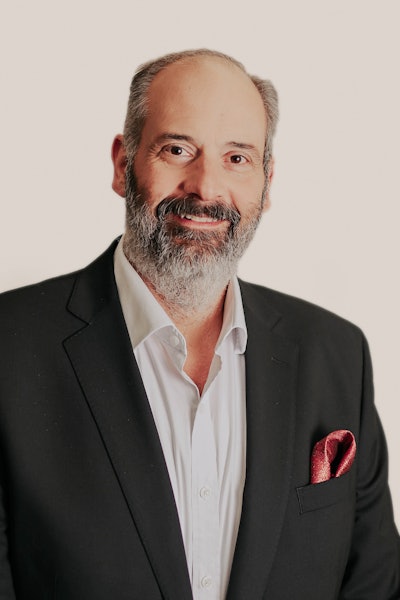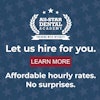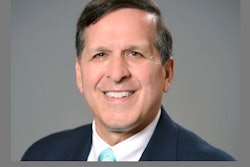Following a recent appointment with my primary care physician, I received a notification on my phone before I even reached my car that a new clinical note had been posted to my account detailing everything that occurred during the visit.
I have to admit that I’ve come to expect this after physician appointments, so at first, I didn’t think much of it.
Then, a few seconds later, something occurred to me: If a similar experience happened after a dental visit, I would be astounded.
The experience raises important questions for our industry: Why has the dental industry lagged behind medicine in interoperability? What’s preventing dentistry from making greater progress towards interoperability? Will it ever change?
The medical industry’s progress toward open data
 Rick Garofolo.
Rick Garofolo.
Recently, the medical industry took what may be some important steps toward achieving interoperability, also referred to as “open data.” The concept refers to information that can be freely accessed, used, and shared across platforms without restrictive barriers.
First, the U.S. Centers for Medicare and Medicaid Services detailed plans for a new health data ecosystem called the "CMS Interoperability Framework."
Essentially, this initiative is a voluntary blueprint that establishes criteria for health data networks, electronic health records (EHR) developers, payers, providers, and digital health apps to exchange health information in a standards-based, secure, transparent way. Patients have access to these data via apps, secure identity credentials, and consistent technical standards like Fast Healthcare Interoperability Resources.
Then, the U.S. Department of Health and Human Services announced that it is more aggressively enforcing rules against information blocking, meaning providers, certified health information technology (IT) developers, networks, and exchanges could be penalized for preventing or hindering access to, the exchange of, or use of electronic health information.
Additionally, health IT developers and networks face civil fines up to $1 million per violation or possible loss of certification, while Medicare and Medicaid providers may face other disincentives under those programs.
While open data principles, such as the two examples above, are widely embraced in medicine -- enabling secure, seamless sharing of patient data among providers, systems, and patients -- interoperability remains largely foreign within the field of dentistry.
What’s hindering dental interoperability?
Unlike medicine, where interoperability has become a regulatory and cultural expectation, dentistry faces significant barriers that slow its adoption. One challenge stems from ownership of records.
Legally, dental practices are the custodians of patient information and must protect these records under HIPAA and state privacy laws. While this responsibility is essential, it often leads to hesitancy around sharing data, even when patients would benefit from seamless transfers.
Technical hurdles also play a central role. Most dental practices use practice management or EHR systems that lack standardized formats or open APIs, making it difficult to exchange information across platforms.
The lack of standardization means that transferring x-rays, treatment notes, or benefit details often requires manual workarounds that waste staff time and introduce errors.
Economic and competitive concerns add another layer of resistance. Some dentists worry that enabling patients to easily take their records elsewhere could result in patient attrition and lost revenue.
In a highly competitive marketplace, patient information is sometimes treated as proprietary, discouraging data portability. This mindset stands in stark contrast to medicine, where open data is viewed as central to continuity of care.
The results of these barriers are clear. Patients often face repeated tests or x-rays because new providers do not have access to their prior records. These inefficiencies frustrate patients, increase costs, and compromise care. In other cases, the inability to access historical data delays insurance payments or results in outright denials, further straining the financial health of dental practices.
A path forward to open data in dentistry
The good news is that dentistry does not lack a road map. However, less encouragingly, it does lack urgency. Federal mandates such as HIPAA and the 21st Century Cures Act already apply to dental providers, requiring that patients have access to their records and prohibiting information blocking.
Nonetheless, enforcement alone has proven insufficient. Compliance is often ignored until penalties arrive.
What will truly move the needle is education and a shift in mindset. Dental providers must understand the real cost of resisting interoperability.
When claims are denied because critical historical data is missing, or when patients repeat costly diagnostic procedures, practices lose money and trust is eroded. Educating providers on the financial and operational impact of closed systems is key to motivating change.
At the same time, patients’ expectations are evolving rapidly. As more people access their medical information instantly via portals and apps, tolerance for outdated dental systems is fading.
Patients increasingly view digital access as a standard of care, not a luxury. Providers who offer transparency, secure portals, and seamless data sharing gain a competitive advantage, while those who do not risk being left behind.
More innovation, better patient care
The path forward is not solely about compliance but about embracing the broader benefits of open data. Interoperability improves patient care and continuity by ensuring providers can view complete histories and avoid redundant procedures.
It boosts operational efficiency by streamlining insurance verification and administrative tasks. It empowers patients to take ownership of their health decisions, improves satisfaction, and opens the door to innovation, from AI-driven diagnostics to more precise treatment planning.
Rick Garofolo is the founder and CEO of Dental Practice Mechanics and a consultant for Vyne Dental.
The comments and observations expressed herein do not necessarily reflect the opinions of DrBicuspid.com, nor should they be construed as an endorsement or admonishment of any particular idea, vendor, or organization.










